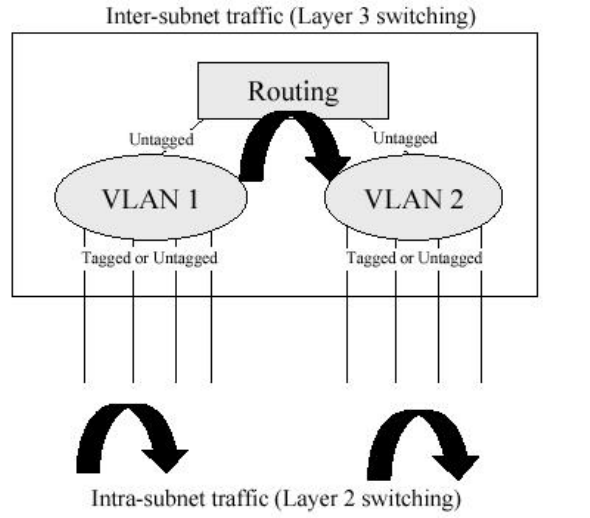
175
4.2.Layer 3 Switching
The two major functions provided by a Layer 3 switch include IP Switching and Routing
Path Management. When the switch is set to multilayer mode (chapter 2 ”Setting the
System Operation Mode”), it acts as a routing switch, with support for standard IP
routing and the ability to pass traffic between VLANs as required. However, when the
switch is first set to multilayer mode, no default routing is defined. As with all traditional
routers, the routing function must first be configured to work. (RIP: chapter 2 , 3
“Configuring RIP”; OSPF: chapter 2 ,3 “Configuring OSPF”).
4.2.1.Initial Configuration
In the default configuration, all ports belong to the same virtual LAN and the switch
provides only Layer 2 functionality. Therefore, you should first group all the ports that
belong to the same subnet into virtual LANs (chapter 2 , 3 “VLAN Table Configuration”).
By separating the switch into different VLANs, the network is partitioned into
subnetworks that are disconnected at Layer 2. Network traffic within the same subnet is
still switched using Layer 2 switching. And the VLANs can now be interconnected (only
as required) with Layer 3 switching.
Each VLAN represents a virtual interface to Layer 3. You just need to provide the
network addresses for each virtual interface (chapter 2 , 3 “Subnet Configuration”), and
the traffic between different subnetworks will be routed by Layer 3 switching.
Note:
When operating the switch in multilayer mode, this switch does not currently


















